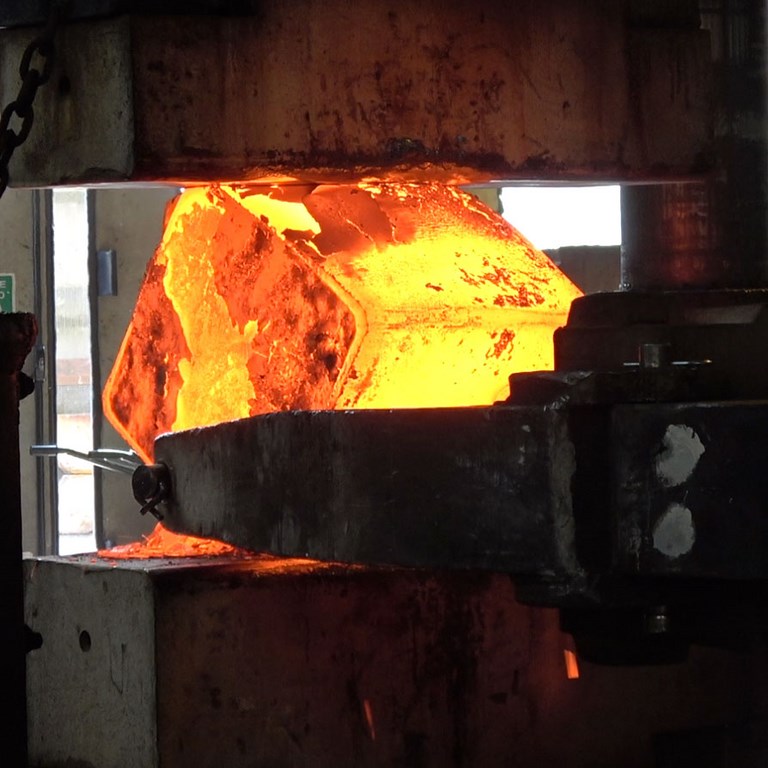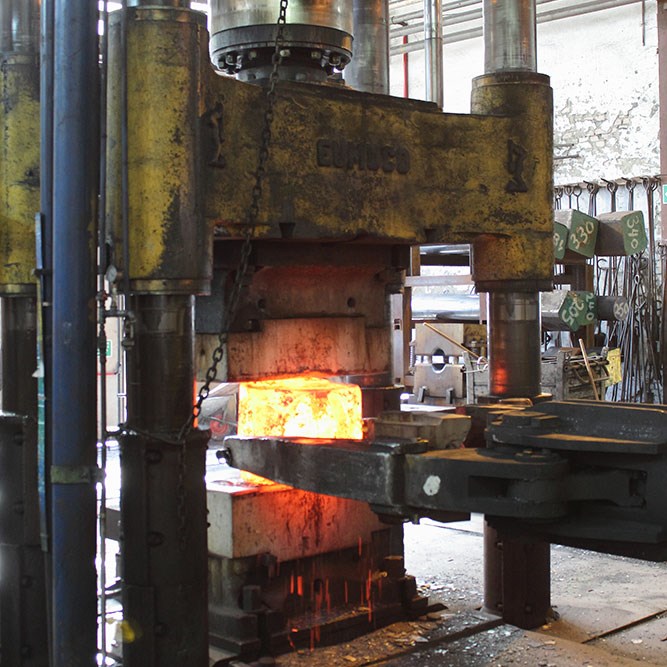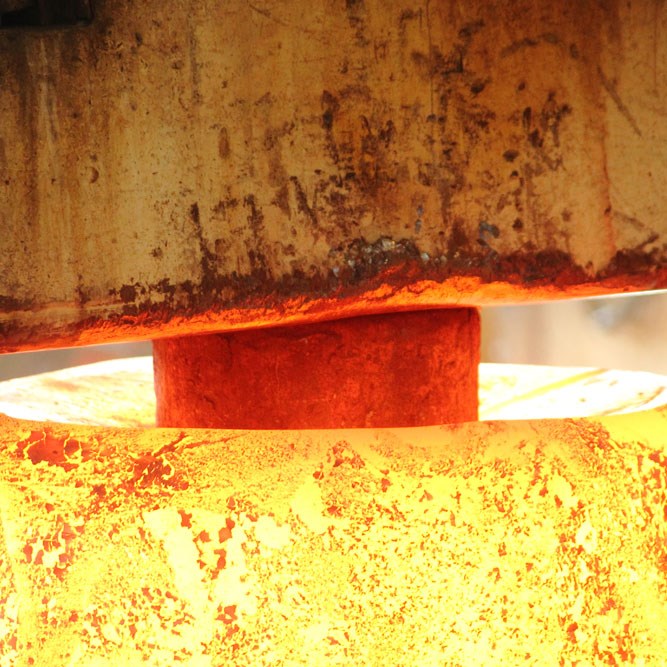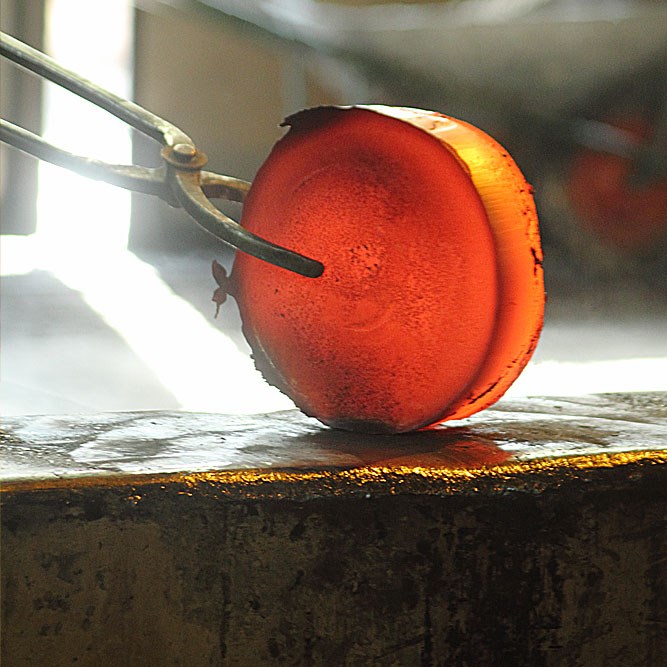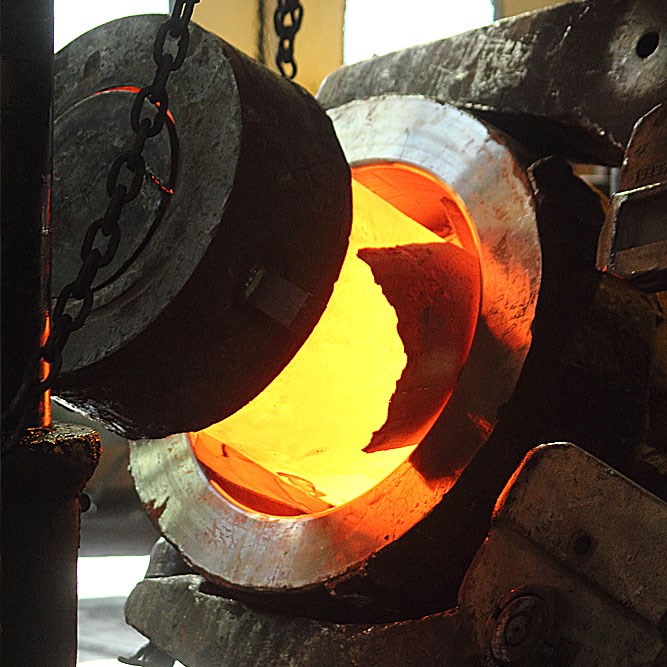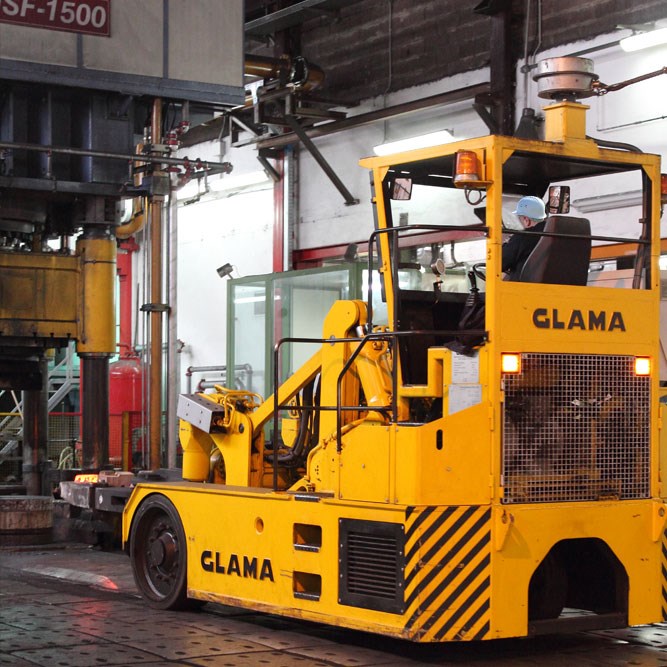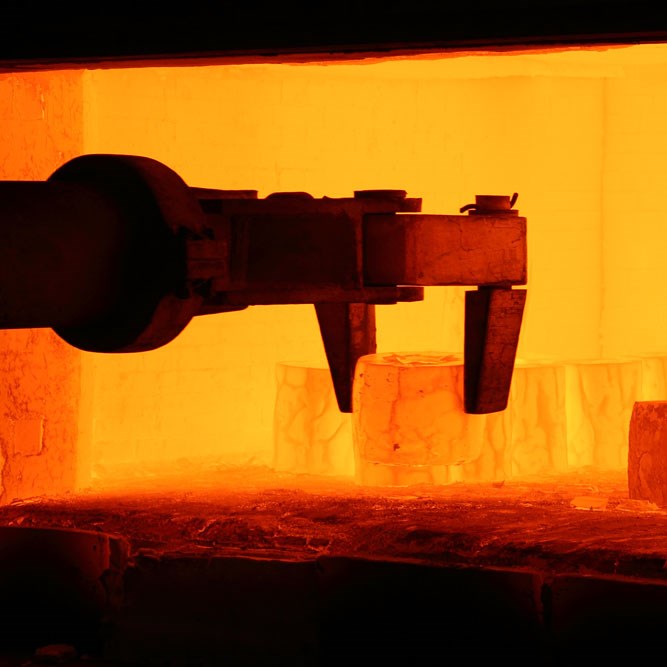Home • Manufacturing Process • Forging

Forging
Forging is one of the oldest known metalworking processes.
It evolved over centuries, from a smith using hammer and anvil to engineered processes, production equipment, tooling, raw materials and products to meet the demands of modern industry.
In modern times, industrial forging is performed either with presses or with hammers powered by compressed air, electricity, hydraulics or steam.
The process involves applying compressive forces to a work piece to deform it and manufacture steel forgings of desired geometry and specific material properties.
These material properties are often greatly improved.
Metal forging can strengthen the material by sealing cracks and closing empty spaces within the metal.
The hot forging process will highly reduce or eliminate inclusions in the forged part by breaking up impurities and redistributing their material throughout the metalwork.
s
Forging a metal will also modify the metal's grain structure with respect to the flow of the material during its deformation, and like other forming processes, can be used to create favorable grain structure in a material greatly increasing the strength of forged parts. For these reasons, metal forging manufacture gives distinct advantages in the mechanical properties of work produced, over that of parts manufactured by other processes such as only casting or machining.
We can classify the metal forging process by the degree to which the flow of material is constrained during the process.
There are two major classifications in metal forging manufacture. First, open die forging, in which the work is compressed in one or between two dies that do not constrain the metal during the process.
Secondly, impression die forging, in which cavities within the die restrict metal flow during the compression of the part, causing the material to deform into a desired geometric shape.
Open Die Forging
Open die forging offers the possibility to forge a wide range of parts, according to customer requirements, big or small quantity, with outstanding results.
The base material heated in furnaces undergoes significant plastic forming (upsetting, stretching etc.) until the part reaches the desired shape and structure.
There are several advantages in choosing open die forging:
- no large series required and no costs for dies;
- high forging ratio and optimal structure orientation;
- high quality of product, verifiable with UT;
- opportunity to reach exceptional mechanical properties.
The range in weight goes from less than 100 kg to around 3 tons.
